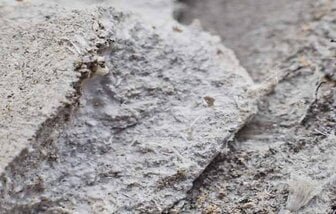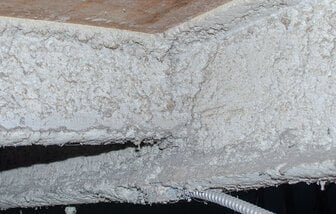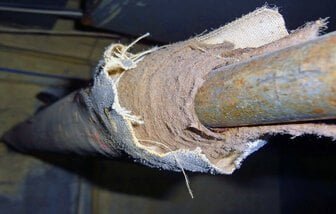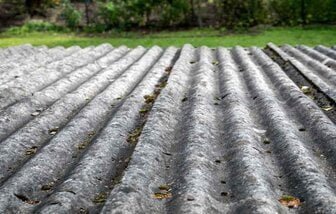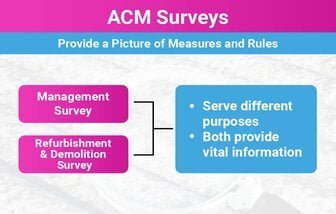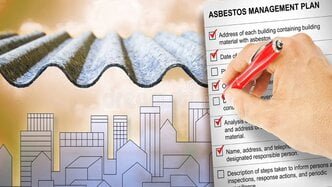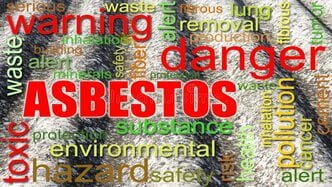Asbestos lagging, ropes & Yarns
Learn about asbestos lagging and asbestos ropes, their historical use, benefits, and associated health risks. Discover the stringent regulations for handling these materials and explore modern alternatives that offer similar benefits without the health hazards. Essential information for industries dealing with legacy asbestos materials.
Understanding Asbestos Lagging and Ropes: A Comprehensive Guide
Asbestos lagging refers to the use of asbestos-containing materials for insulating pipes, boilers, and other industrial equipment that operate at high temperatures.
Asbestos, a naturally occurring mineral, was prized for its exceptional heat resistance, tensile strength, and insulating properties. These characteristics made it an ideal choice for lagging, which is the term used to describe the insulation wrapped around various types of equipment to prevent heat loss and protect against fire.
Historically, asbestos lagging was widely adopted across numerous industries, including power generation, shipbuilding, and construction. The material was used extensively from the early 20th century until the late 1970s, when awareness of its health risks began to increase.
Several types of asbestos, including chrysotile (white asbestos), amosite (brown asbestos), and crocidolite (blue asbestos), were used in lagging. Each type provided different benefits in terms of heat resistance and durability, contributing to the widespread use of asbestos lagging.
However, the same properties that made asbestos an effective insulator also posed significant health risks. When asbestos fibers are disturbed, they can become airborne and inhaled, leading to serious respiratory diseases.
Prolonged exposure to asbestos lagging has been linked to conditions such as asbestosis, mesothelioma, and lung cancer. These diseases often have long latency periods, meaning symptoms may not appear until many years after initial exposure.
Due to these health hazards, the use of asbestos lagging has been heavily regulated. In many countries, strict guidelines have been established for the handling, removal, and disposal of asbestos-containing materials.
Workers dealing with asbestos lagging must follow safety protocols, including wearing protective equipment and undergoing specialized training. Regulations also mandate the use of alternative materials for insulation that do not pose the same health risks as asbestos.
Understanding the composition, historical usage, and associated health risks of asbestos lagging is crucial for ensuring safe practices in industries where legacy asbestos materials may still be present. Adhering to regulatory guidelines helps protect both workers and the environment from the dangers of asbestos exposure.
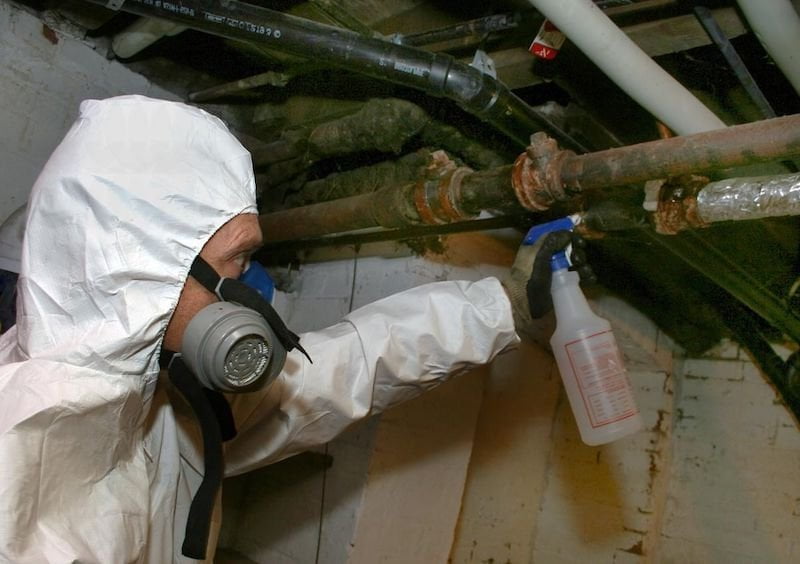
Asbestos ropes have long been recognized for their exceptional properties, making them a staple in various industrial applications. The history of asbestos usage dates back centuries, with its heat resistance, durability, and flexibility contributing to its widespread adoption. These characteristics made asbestos an invaluable resource, particularly in environments where high-temperature resistance and strength were paramount.
Asbestos ropes are composed of asbestos fibers, with chrysotile being the most commonly used type. Chrysotile, also known as white asbestos, is favored for its flexibility and high tensile strength. These fibers are spun into different forms of ropes, including twisted, braided, and woven varieties, each designed to meet specific requirements. Twisted ropes are often used for sealing and packing, braided ropes for high-temperature gaskets, and woven ropes for insulation purposes.
Historically, several industries in the UK relied heavily on asbestos ropes. The shipbuilding industry, for example, utilized these ropes for their fire-resistant properties, vital for ensuring safety on vessels. The construction sector also made extensive use of asbestos ropes for insulation and fireproofing. Additionally, the manufacturing industry incorporated asbestos ropes in machinery and equipment that required heat resistance and durability.
Asbestos ropes found applications in numerous other settings as well, such as power plants, chemical plants, and automotive industries. Their ability to withstand extreme temperatures made them indispensable in high-heat environments. Despite their benefits, the hazardous nature of asbestos fibers was eventually recognized, leading to a decline in their usage due to health risks associated with asbestos exposure.
Understanding the historical context and applications of asbestos ropes is crucial for comprehending their impact and the eventual shift towards safer alternatives. This knowledge provides a foundation for discussing the risks and current regulations surrounding asbestos use in the UK.
Health Risks and Regulations Surrounding Asbestos Ropes in the UK
Asbestos ropes, while historically valued for their thermal resistance and durability, pose significant health risks due to the hazardous nature of asbestos fibers. When asbestos ropes are handled, cut, or improperly disposed of, asbestos fibers can become airborne and inhaled. This can lead to serious health conditions, including asbestosis, lung cancer, and mesothelioma. Asbestosis is a chronic lung disease that results from the scarring of lung tissue, while mesothelioma is a rare but aggressive form of cancer that affects the lining of the lungs, heart, or abdomen. The latency period for these diseases can be extensive, often taking decades to manifest, which complicates early detection and treatment.
The UK has implemented stringent regulations to mitigate the risks associated with asbestos, including asbestos ropes. The Control of Asbestos Regulations 2012 is a critical piece of legislation that outlines the responsibilities of employers, building owners, and contractors in managing asbestos-containing materials. Under these regulations, the Health and Safety Executive (HSE) plays a pivotal role in overseeing compliance and enforcing safety measures. The regulations mandate thorough risk assessments, proper training for workers, and the use of appropriate protective equipment when dealing with asbestos.
Proper handling, removal, and disposal of asbestos ropes are crucial to minimizing health risks. The regulations require that only licensed asbestos removal contractors carry out these tasks, ensuring that the dangerous fibers are contained and disposed of safely. Employers and building owners are legally obligated to maintain an asbestos register, conduct regular inspections, and inform those who may come into contact with asbestos of its presence and associated risks.
In recent years, there has been a shift towards safer alternatives to asbestos ropes. Modern materials such as fiberglass, ceramic, and other high-temperature resistant fibers offer similar performance without the associated health risks. These alternatives comply with contemporary health and safety standards, providing a safer working environment while maintaining the functional benefits that asbestos ropes once provided.
Asbestos lagging refers to the use of asbestos-containing materials for insulating pipes, boilers, and other industrial equipment. This practice was prevalent from the early to mid-20th century, primarily due to asbestos’ exceptional heat-resistant properties. Asbestos lagging was widely used in various industries, including construction, shipbuilding, and manufacturing. Its application was deemed essential in environments that required effective thermal insulation and fireproofing to ensure safety and efficiency.
The history of asbestos lagging can be traced back to the early 1900s, a time when the industrial revolution was in full swing. The demand for durable and heat-resistant materials led to the widespread adoption of asbestos in numerous industrial applications. Asbestos lagging was particularly favored because it could withstand high temperatures without degrading, making it ideal for insulating high-temperature equipment such as boilers and steam pipes. This usage continued well into the mid-20th century, before the severe health risks associated with asbestos exposure became widely recognized.
There are several types of asbestos that were commonly used in lagging, each with unique properties. Chrysotile, also known as white asbestos, was the most frequently used type due to its flexibility and resistance to heat. Amosite, or brown asbestos, was valued for its strength and heat resistance, making it suitable for use in demanding industrial environments. Crocidolite, or blue asbestos, was known for its excellent heat and chemical resistance but was also the most hazardous type due to its fine, needle-like fibers.
The physical characteristics of asbestos lagging materials were well-suited to their industrial applications. Asbestos fibers were often mixed with other materials to create insulating products such as blankets, tapes, and cement. These materials were then applied to equipment by wrapping, spraying, or troweling. The manufacturing process involved weaving asbestos fibers into cloth or mixing them with binding agents to form a solid, durable coating. This ensured that the lagging provided effective insulation while also being easy to apply and maintain.
The Dangers of Asbestos Lagging in the UK
Asbestos lagging, once widely used for its fire-resistant properties, poses significant health risks due to the release of asbestos fibers into the air. When these fibers are inhaled, they can lead to severe diseases such as asbestosis, lung cancer, and mesothelioma. Asbestosis is a chronic lung disease characterized by scarring of lung tissue, while mesothelioma is a rare cancer affecting the lining of the lungs, abdomen, or heart. Lung cancer caused by asbestos exposure is particularly aggressive and often fatal.
The latency period of asbestos-related diseases is notably prolonged, with symptoms sometimes not appearing until decades after initial exposure. This delay makes early diagnosis and treatment challenging, often resulting in a poorer prognosis for affected individuals. The long latency period also underscores the importance of stringent regulatory measures to manage asbestos risks effectively.
In the UK, the Control of Asbestos Regulations 2012 provides a comprehensive framework for managing asbestos risks and protecting public health. These regulations mandate the identification and control of asbestos in buildings, particularly those constructed before 2000. Employers and property owners have legal responsibilities to assess the presence of asbestos, implement appropriate management plans, and ensure the safe removal of asbestos lagging by licensed professionals. Failure to comply with these regulations can lead to severe penalties and legal consequences.
Identifying asbestos lagging involves a thorough inspection by qualified surveyors who can assess the extent of asbestos within a property. Once identified, removing asbestos lagging must be conducted by licensed asbestos removal contractors who follow strict safety protocols to prevent fiber release. This process includes sealing off the area, using specialized equipment, and proper disposal of asbestos waste to minimize the risk to both workers and the public.
Real-world examples of asbestos-related incidents highlight the severe impact on individuals and communities. For instance, the case of Armley, a suburb of Leeds, where many former workers of the J.W. Roberts asbestos factory developed mesothelioma decades after exposure, underscores the long-term dangers of asbestos. Such cases emphasize the critical need for ongoing vigilance and adherence to regulatory measures to protect public health from the dangers of asbestos lagging.
Asbestos yarns are made from asbestos fibers that have been spun into a thread-like form. These yarns are known for their high tensile strength, durability, and resistance to heat and fire. Due to these properties, asbestos yarns have been commonly used in insulation, gaskets, textiles, and other heat-resistant applications.
Uses of Asbestos Yarns in the UK
In the UK, asbestos yarns were widely used in various industries until the late 20th century. Some common applications of asbestos yarns included:
- Insulation: Asbestos yarns were used to insulate pipes, boilers, and other equipment in commercial and residential buildings.
- Gaskets and Seals: Asbestos yarns were used in the manufacturing of gaskets and seals for their heat resistance and sealing properties.
- Textiles: Asbestos yarns were used in the production of fire-resistant fabrics, such as curtains, blankets, and protective clothing.
- Electrical Applications: Asbestos yarns were used as insulation in electrical wires and cables.
It is important to note that the use of asbestos in these applications has been banned in the UK since 1999 due to the recognized health risks associated with asbestos exposure.
Health Risks of Asbestos Yarns
Exposure to asbestos yarns or any other asbestos-containing materials can pose serious health risks. Inhalation of asbestos fibers can lead to the development of asbestos-related diseases, such as:
- Asbestosis: A chronic lung condition caused by the scarring of lung tissue due to asbestos fibers.
- Mesothelioma: A rare and aggressive form of cancer that affects the lining of the lungs, abdomen, or heart.
- Lung Cancer: Exposure to asbestos increases the risk of developing lung cancer, especially in smokers.
The health risks associated with asbestos exposure are not immediate and can take several years or even decades to manifest. Therefore, it is crucial to take necessary precautions to prevent exposure and seek medical advice if you suspect you have been exposed to asbestos yarns or other asbestos-containing materials.
Asbestos Millboard
Millboards manufactured between 1896 and 1965 can contain chrysotile asbestos (up to 97%). Often found in: Pipe runs, electrical gear, vaults, storage. Often used for: Fire protection on structural
Asbestos Cement
Generally containing 10-15% asbestos fibres which are bound in Portland cement or calcium silicate. Uncoated sheets, widely used in the past as a building material can be identified as light grey in
Asbestos Sprayed Coatings
Asbestos sprayed coatings have been widely used in the construction industry in the past, particularly in the United Kingdom
Asbestos Tiles
Learn about asbestos floor tiles in the UK, including their identification, dangers, and management. Find out how to identify asbestos floor tiles
Asbestos Lagging, Ropes & Yarns
Asbestos lagging and ropes were once widely used for their insulation properties. However, due to the health risks associated with asbestos exposure, their use has been banned in many countries.
Asbestos Textured Coatings
Asbestos textured coatings, also known as Artex or similar products, were widely used in the construction industry in the UK from the 1960s to the 1990s. These coatings were applied to ceilings
Corrugated Asbestos Panels
When it comes to garage roofing in the UK, one type of material that was widely used in the past is corrugated asbestos panels. However ue to health and safety concerns, the use of asbestos has been banned
Crocidolite Asbestos
Learn about crocidolite asbestos, a highly hazardous form of asbestos that was widely used in various industries. Discover its properties, health risks, and the importance of professional testing and removal.
Amosite Asbestos
Amosite asbestos, also known as brown asbestos, is a type of asbestos mineral that was widely used in various industries for its heat resistance and insulating properties.
Chrysotile Asbestos
Learn about chrysotile asbestos, its applications, and the potential health risks associated with exposure. Understand the importance of safety measures and regulations to prevent asbestos
Asbestos Surveys
We are able to provide any level of survey required, up to the Demolition and Refurbishment survey now required prior to the demolition of any building or structure.
What is Asbestos?
Asbestos was commonly used as a construction material in the UK between the 1950s and 1980s in particular. If your home was built between these years, chances are that you are living with Asbestos
Asbestos Management Plan
An asbestos management plan is essential for managing asbestos-containing materials (ACMs) in buildings. It aims to protect occupants and workers from asbestos exposure through identification, assessment, and control of ACMs.
Asbestos Dangers
Learn about the dangers of asbestos, its health risks including mesothelioma and lung cancer, and how to protect yourself from exposure. Understand the regulations and laws regarding asbestos, and find resources and support for asbestos-related issues.
Types Of Asbestos
Learn about the different types of asbestos, including chrysotile asbestos, amphibole asbestos, tremolite asbestos, and anthophyllite asbestos. Understand the characteristics and health risks associated with each type of asbestos.
How To Manage Asbestos
Dealing with asbestos requires caution and adherence to proper safety procedures. Identifying asbestos and taking appropriate action is crucial to protect the health and well-being of individuals. If you suspect the presence of asbestos.
Ready to start your project?
Committed to Excellence on all levels
Let's Work Together
Please complete the form below and someone from the Total team will be in touch to discuss your asbestos requirements For urgent needs, our customer support team is available through various channels. You can reach us via phone during business hours, or through our dedicated email support. We are committed to providing timely assistance and ensuring your asbestos concerns are addressed promptly and professionally.


